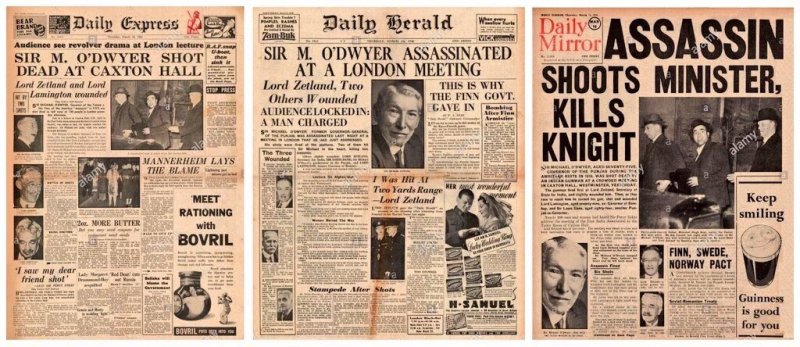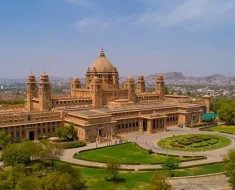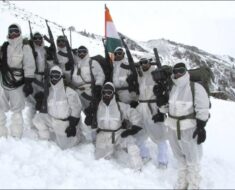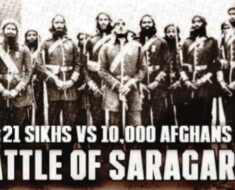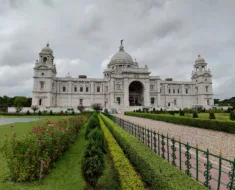The Jallianwala Bagh Massacre is one of the most murderous and remorseless incidents in the history of mankind. It was a cold-blooded genocide that shook the entire nation and the massacre acted as a catalyst in shaping the Indian Independence movement.
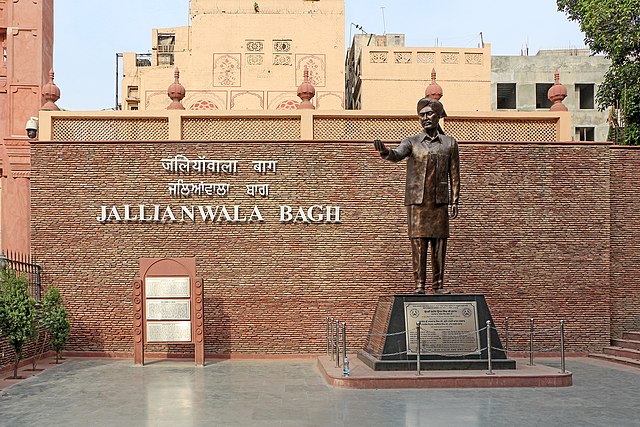
The Jallianwala Bagh Massacre also known as the Amritsar Massacre took place on 13 April 1919 and resulted in the death of over 1,000 people and another 1,500 people were injured in the firing. The ground stands to witness the inhuman savagery and wickedness of the British Empire.
Britain never formally apologized for the massacre but expressed “regret”.
Before the Massacre
Before the Jallianwala Bagh Massacre, the Anarchical and Revolutionary Crimes Act of 1919, popularly known as the Rowlatt Act was passed on 19 March 1919. It led to widespread anger and discontent among Indians, especially in the Punjab region.
Mahatma Gandhi in early April called for a one-day general strike throughout the country. A hartal (general strike) was observed on March 30th and April 6th, 1919.

In Amritsar the news that prominent Indian leaders Dr. Kitchlew and Dr. Satyapal had been arrested on the basis of the Rowlatt Act and are moved to an unknown location sparked protests. The protestors gathered at the residence of Deputy Commissioner of Amritsar, Miles Irving, and demanded their release. A military picket fired at the crowd killing several protesters. This led to a series of violent events and riots. British banks and buildings were put on fire and several British people were killed and assaulted.
A force of several dozen troops commanded by Brig. Gen. Reginald Edward Harry Dyer was given the task to restore law and order. He imposed Martian Law and banned all public gatherings but the general public was not made aware of this fact.
Jallianwala Bagh Massacre: The Massacre of Humanity
Many people were gathered in the Jallianwala Bagh to celebrate Baisakhi, an important festival for Hindus and Sikhs, and to peacefully protest the arrest of Indian National Congress Leaders, Satyapal and Saifuddin Kitchlew.
Dyer arranged an airplane to overfly the Jallianwala Bagh to estimate the number of people gathered at the Bagh which he reported to be around 6000. But the Hunter Commission submitted in its report that a crowd of 10,000 to 20,000 had assembled by the time Dyer arrived.

Colonel Dyer and Deputy Commissioner Miles Irving, the senior civil authority officers for Amritsar took no action to stop the assembling of the crowd or to peacefully disperse them.
Colonel Dyer arrived at the Bagh with a group of ninety soldiers from the Gurkha Rifles, the 54th Sikhs, and the 59th Sind Rifles. Fifty of them were armed with .303 Lee–Enfield bolt-action rifles.
He had also brought two armoured cars armed with machine guns which were left outside as they were unable to enter the Bagh through the narrow entrances.
The Jallianwala Bagh was surrounded on all sides by houses and buildings and had only five narrow entrances which used to be permanently locked. The main entrance was relatively wide but was blocked by the troops and the armoured vehicles.
Dyer without giving any warning to the crowd ordered his troops to start shooting toward the densest sections of the crowd. He stated later that this act “was not to disperse the meeting but to punish the Indians for disobedience.”
Read More: Battle of Saragarhi – 21 Sikhs Vs 10000 Afghans
Casualties
The firing lasted for 10 to 15 minutes. An estimated 1,650 rounds of bullets were fired at the crowd. Cease-fire was ordered only when ammunition supplies were almost exhausted.

Besides those killed by the bullets, some died jumping into a well in the garden, while many were trampled by the people trying to escape. It is said that 120 dead bodies were pulled out of the well.
Many people died in the stampede during the chaos, while many were fatally injured and died afterward due to a lack of medical attention.
Among the dead were men, women, the elderly, and children as young as seven months old.

The number of total casualties is disputed. The newspapers next morning quoted a fallacious and inaccurate initial figure of 200 casualties, offered by the Associated Press.
“News has been received from the Punjab that the Amritsar mob has again broken out in a violent attack against the authorities. The rebels were repulsed by the military and they suffered 200 casualties.” — The Times of India, 14 April 1919
The Sewa Samiti a social services society estimated that 379 were identified as dead and approximately 1,200 were wounded, of whom 192 were seriously injured.
The casualty number estimated by the Indian National Congress was more than 1,500 injured, with approximately 1,000 dead.
Read More: 15 Must-Visit Historical Places in India
Hunter Commission
The news of the massacre reached Britain in December 1919 and Hunter Committee was formed for inquiry. Before the Hunter Committee started its proceedings, the British government passed the Indemnity Act in order to safeguard its officers.

As expected, General Dyer walked clean except that he was called back to England after resigning.
As expected General Dyer faced no consequences for his heinous actions during the Jallianwala Bagh Massacre. He was relieved from his current position in the army, turned down from a possible promotion, and just barred from any employment in India,
No trial was held afterward and he was relieved from his duties and summoned back to England.
The Hunter Commission merely criticized Dyer and Govt of Punjab for failing to compile a detailed casualty count.
Dyer died in 1927 in England at the age of 63.
Read More: Bhikaiji Cama: The First Lady to Hoist India’s Flag on Foreign Soil
The assassination of Michael O’Dwyer
Shaheed-i-Azam Sardar Udham Singh avenged the Jallianwala Bagh massacre by assassinating Michael O’Dwyer in London on 13 March 1940 at Caxton Hall in London.
O’Dwyer was the Lt Governor of Punjab during the massacre and he supported General Dyer’s actions.
He believed that a revolt was brewing against the British Raj in Punjab, approved of the massacre and said it was an integral part of the planning.
Sardar Udham Singh was hanged for the assassination on July 31, 1940.
Demands for apology
There is a long-standing demand in India that Britain should apologize for the massacre. But Britain has never formally apologized for the massacre but expressed “regret”.

David Cameron was the first serving British Prime Minister to visit the Jallianwala Bagh Memorial in Feb 2013 and laid a wreath at the memorial and said, “a deeply shameful event in British history, one that Winston Churchill rightly described at that time as monstrous. We must never forget what happened here and we must ensure that the UK stands up for the right of peaceful protests”.
He did not deliver an official apology.
On 12 April 2019, a ceremony was held in Amritsar just before the centenary anniversary of the massacre.
British Prime Minister Theresa May called the 1919 shooting of unarmed civilians a “shameful scar”, echoing the 2013 statement, made by David Cameron.
Read More: Sarojini Naidu – ‘The Nightingale of India’
Some More Facts about the Jallianwala Bagh Massacre
- The Indian National Congress built a memorial for the innocent souls who departed on this unfortunate day and it was inaugurated by Rajendra Prasad in 1961.
- Mahatma Gandhi returned the ‘Kaiser-i-Hind’ award he was given by the British government for his role in the Boer War in South Africa.
- Rabindranath Tagore renounced his knighthood in protest of the Jallianwala Bagh massacre and said, “Such mass murderers aren’t worthy of giving any title to anyone”
- The reactions in Britain were mixed. The members of the House of Lords applauded Dyer’s actions and gave him a sword inscribed with the motto “Saviour of the Punjab” while the House of Commons widely condemned and criticized him.
- Winston Churchill, then secretary of war openly condemned the attack and referred to it as “unutterably monstrous”. Former Prime Minister H. H. Asquith called it “one of the worst, most dreadful, outrages in the whole of our history”
- When Dyer returned to England, he was proclaimed a hero by some. English newspaper, The Morning Post, organized a fund-raising campaign in support of Dyer and collected UKP 26,000.
- Thanking the people for their support, Dyer wrote in the newspaper, “I am proud to think that so many of my fellow countrymen and women approve of my conduct at Amritsar, and I accept the token of their approval in the spirit in which it is offered.”
- Author Rudyard Kipling is said to have contributed 10 pounds in support of Dyer and said he “did his duty as he saw it”.
Read More: Golden Temple, Amritsar – Four Doors To Heaven

